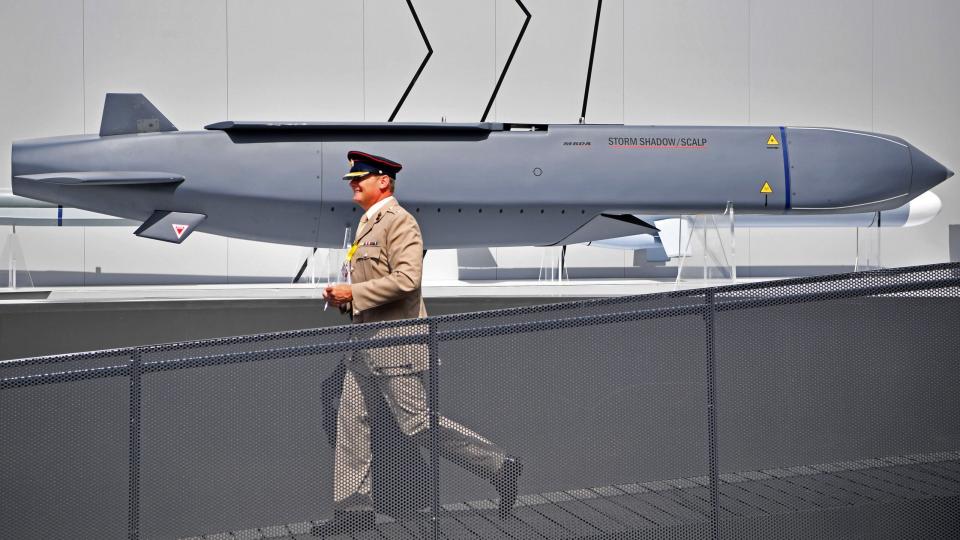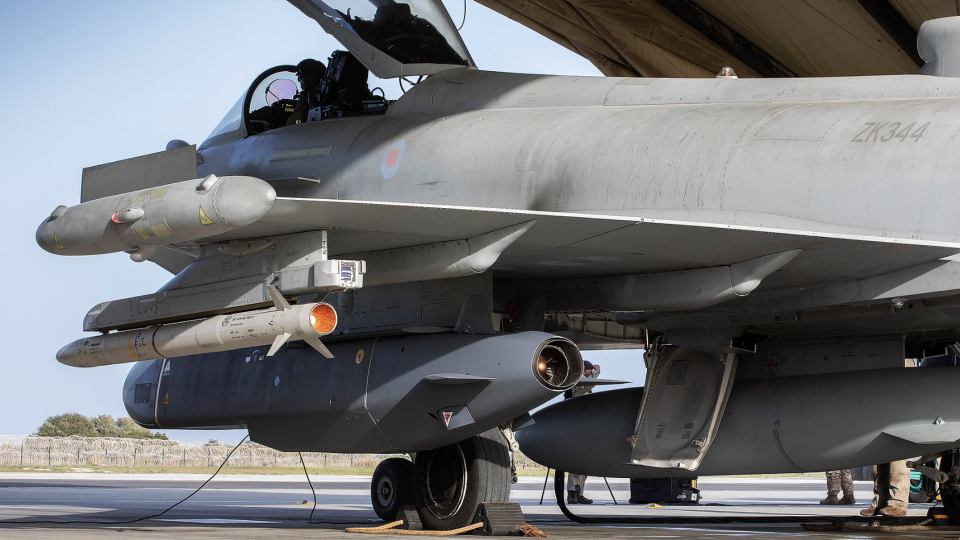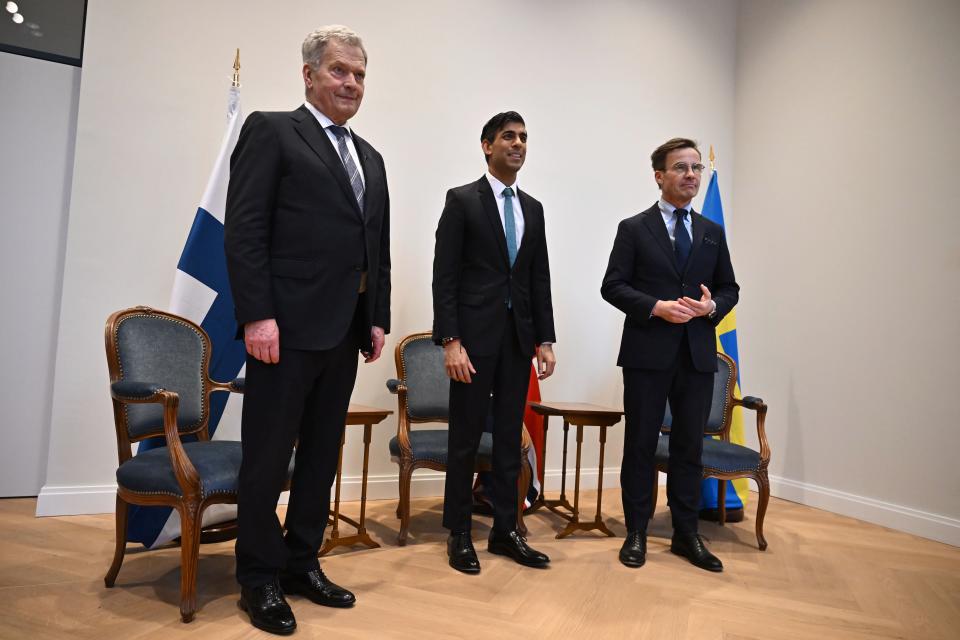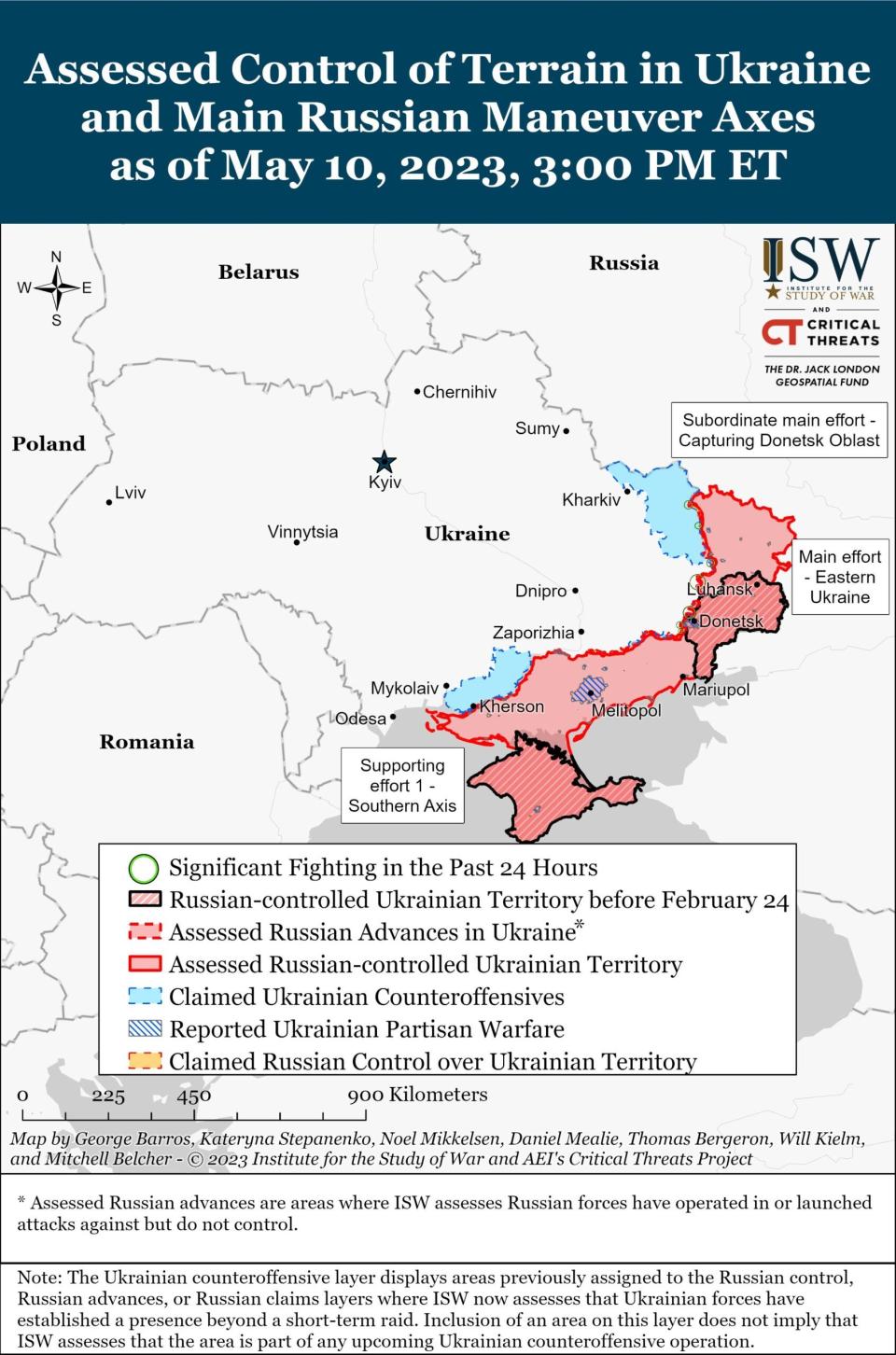Ukraine's Storm Shadow Missiles Are A Big Problem For Russia

The United Kingdom is supplying Ukraine with multiple Storm Shadow conventionally armed cruise missiles, a combat-proven advanced precision strike weapon with an officially stated range of over 155 miles. As far as we know, this is the longest-range standoff weapon to be delivered to Ukraine since Russia launched its full-scale invasion.
While there had been previous hints that the United Kingdom was looking to get longer-range strike weapons of some kind into Ukrainian hands, today’s official announcement confirms that such a move will involve the air-launched Storm Shadow — some of which may have already been handed over.

Speaking in the British parliament today, U.K. Defense Minister Ben Wallace said that his country had begun supplying Ukraine with Storm Shadows, fulfilling a longstanding request from Kyiv for long-range missiles.
“We will simply not stand by as Russia kills civilians,” Wallace told parliament. “Russia must recognize that its actions alone have led to such systems being provided to Ukraine.”

Wallace added the missiles “are now going into, or are in, the country itself,” suggesting that at least some of the missiles may already be in Ukraine, potentially ready to use in support of an expected spring counteroffensive.
However, the Storm Shadows have apparently been supplied with Kyiv’s assurance that they won’t be used against targets in the Russian Federation. Wallace said that the weapons would be used within Ukraine’s sovereign territory — although that would not rule out strikes against Russian-occupied parts of Ukraine, also including Crimea.
Whatever way the missiles are used, the announcement has already incurred Moscow’s wrath. Ahead of Wallace’s statement, the Kremlin said that providing Ukraine with Storm Shadows would require “an adequate response from our military.”
Interestingly, Wallace seemed to make efforts to distinguish between the range capability of the Storm Shadow compared with some of the standoff missiles used by Russia.
“[While] these weapons will give Ukraine new capability, members should recognize that these systems are not even in the same league as the Russian AS-24 Killjoy hypersonic missile,” Wallace said, or “even the Kalibr cruise missile with a range of over 2,000 kilometers [1,240 miles], roughly seven times that of a Storm Shadow missile.”
As The War Zone has discussed before, the Storm Shadow is “designed to meet the demanding requirements of pre-planned attacks against high-value fixed or stationary targets,” according to its manufacturer, the pan-European missile house MBDA.

Yuriy Sak, an adviser to Ukraine’s defense minister, today provided some ideas of possible targets for the Storm Shadow: “Our partners know very well why we need them: to be able to reduce the enemy’s offensive potential by destroying their ammunition depots, command and control centers, and logistics chains on the temporarily occupied Ukrainian territory.”
The missile has a BROACH tandem warhead designed to penetrate hardened targets, including bunkers. The warhead uses a precursor charge to punch through hardened structures followed by the main change that can be fuzed for penetration mode when required, meaning it detonates after breaching the target. The missile guidance system combines an inertial navigation system, GPS, and terrain referencing.
Overall, the Storm Shadow should give Ukraine a powerful new ability to hit key targets, including command nodes, supply dumps and bridges, deep behind the front lines.
Ukraine has long campaigned for the Army Tactical Missile System (ATACMS), a ground-launched short-range ballistic missile that can be fired from suitable M142 High Mobility Artillery Rocket Systems, or HIMARS, and M270 Multiple Launch Rocket System (MLRS) launchers that are already in Ukrainian use. With a range of over 155 miles, the Storm Shadow falls someway short of ATACMS, with its almost 200-mile range. However, the air-launched cruise missile still greatly extends the range at which the country can hold Russian targets at risk. Meanwhile, it also seems that the HIMARS launchers for Ukraine have apparently had their ATACMS capability stripped out, at least for the time being.
Previously, Ukraine also received examples of the Boeing-produced Ground Launched Small Diameter Bombs (GLSDB), an adaptation of the widely used air-launched Small Diameter Bomb, or SDB, which has also provided a significant boost to Ukraine’s capacity to strike in Russian rear areas. However, with its range of around 94 miles, the GLSDB is easily outmatched by the Storm Shadow, which also delivers a much heavier warhead and offers stealthy features and a low-flying profile that makes interception that much harder.
As to how the Storm Shadow will be employed, that’s unclear, although Wallace seemed to indicate that it would be air-launched, and not adapted for a ground launcher. He said that part of the reason for the time it has taken to get the missile to Ukraine was due to “working out if it was technically feasible” to integrate them on unfamiliar aircraft.
The Ukrainian Air Force’s MiG-29 Fulcrum fighter jets and Su-25 Frogfoot attack jets are likely unable to carry the Storm Shadow. Each missile weighs around almost 2,900 pounds. The heaviest weapons routinely carried by the MiG-29 and Su-25 are only around 1,100 pounds each. The heaviest-lifting stores pylons on the Frogfoot can only accommodate weapons of 1,100 pounds, and heavier weapons are rarely ever seen on early-model MiG-29s.
This would seem to suggest that the Su-27 Flanker fighter jet and/or the Su-24 Fencer strike aircraft would be the likely candidates as Storm Shadow shooters. These larger aircraft have much greater payload capacities and the Su-24, in particular, can routinely carry weapons of over 3,300 pounds each.
To what degree work has been completed to integrate the Storm Shadow on the aircraft that will carry it into combat is unclear. In theory, however, the process shouldn’t be too onerous, with the Storm Shadow missile being preprogrammed with target coordinates before flight, meaning there is no need for an interface allowing the aircraft to feed data in before launch.
The missile’s range also promises to overhaul the strike capabilities of the Ukrainian Air Force in general, although much will depend on how many of these expensive weapons have actually been supplied. Each Storm Shadow is thought to cost around $2.5 million and, although an upgrade program is underway, the United Kingdom is already planning to replace these weapons, meaning they will become surplus to requirements from around 2030, in any case.
Although we have seen some use of Soviet-era precision-guided ordnance by Ukrainian jets, and we know that both the AGM-88 High-speed Anti-Radiation Missile (HARM) and Joint Direct Attack Munition-Extended Range (JDAM-ER) have also been integrated, the vast majority of offensive missions have involved unguided rockets fired from a very low level in the approximate direction of the target, with much-reduced accuracy.
A Ukrainian Air Force video showing its MiG-29s carrying and firing AGM-88 High-speed Anti-Radiation Missiles, or HARMs:
The Storm Shadow not only offers more or less pinpoint accuracy, but its range means it can be launched from outside the engagement envelope of Russian ground-based air defense systems around the highly contested front lines. That’s not to say that the launch aircraft would be in any way immune to the Russian threat, with long-reaching surface-to-air missiles and air-to-air missiles still an ever-present threat in many areas.
It’s also the case that the Storm Shadow, despite its low-observable design and its terrain-hugging flight profile, is not entirely immune to interception, although the ability to employ up-to-date intelligence to program its routes offers the best chance of survival is significant. Moreover, the addition of the new missile to the Ukrainian Air Force inventory brings added complications for Russia in terms of how and where it should concentrate its own air defense assets. The degree to which the Storm Shadow is truly disruptive, however, will again depend upon the number that Ukraine has, at least to start with. If the number of missiles is low, they could well be focused upon very specific, harder-to-reach, but important targets, like command and control nodes and logistical arteries.
Back in February, U.K. Prime Minister Rishi Sunak had told the Munich Security Conference that Britain would be the first country to provide Ukraine with longer-range weapons, igniting speculation that a transfer of Storm Shadows could be a possibility.
“We must help Ukraine to shield its cities from Russian bombs and Iranian drones,” Sunak said at the time. “And that’s why the UK will be the first country to provide Ukraine with longer-range weapons.”

Only last week, meanwhile, a British-led group of European countries asked companies for expressions of interest to supply Ukraine with missiles with a range of up to 300 kilometers (190 miles), again raising speculation of Storm Shadow for Ukraine. However, earlier this week, U.K. officials said that no final decision had been taken on supplying the weapons.
Today’s announcement reinforces the United Kingdom’s position as one of the leading supporters of the Ukrainian war effort, with around $2.9 billion of military aid provided last year alone. This makes the United Kingdom second only to the United States and, although the value of weapons involved is far less than the tens of billions of dollars from Washington, it’s notable that the United Kingdom has taken the lead on getting certain key weapons into Ukrainian hands.
The United Kingdom was quick to send shoulder-launched anti-aircraft and anti-tank weapons to Ukraine and was the first to announce it would begin training Ukrainian pilots to operate modern NATO-standard fighter jets, although the exact nature of that training remains unclear and Ukrainian requests for the aircraft themselves have so far been ignored in London, as they have elsewhere.
Earlier this year, the United Kingdom said it would send 14 of its main Challenger 2 main battle tanks to Ukraine, apparently kickstarting a broader international effort to get similar equipment to Ukraine, with the British tanks being followed by German-made Leopard 2s and U.S.-made M1 Abrams.
It remains to be seen whether the Storm Shadow will be deployed in support of the long-awaited Ukrainian spring offensive, but it’s noteworthy that the delivery of the weapon was announced at this point. One reason could be that the United Kingdom wanted to make the transfer of the missiles overt, meaning that their use would not come as a surprise should Ukraine employ them against Russian targets in the near future.
On the other hand, announcing the possible readiness of Ukraine to deploy Storm Shadows also presents an additional headache for Russian commanders, as they now have to assume that a whole new set of possible targets are now available to Ukraine. This would clearly complicate the response to a large-scale counteroffensive, especially in terms of major supply dumps as well as critical infrastructure and chokepoints.
For Ukraine, the Storm Shadow theoretically opens up the possibility to strike targets deep within Crimea, including Sevastopol, with its extensive military infrastructure. However, a mission of this kind would involve running the gauntlet of the extensive Russian ground-based air defense umbrella that spills deeply into Ukrainian-controlled areas. Here, again, the importance of the counteroffensive becomes clear, since this could help push back those air defenses and make standoff attacks on these further-flung all-important targets a more realistic prospect.

The prospect of the heavy-hitting Storm Shadow being unleashed on the heart of the Black Sea Fleet is so far an unprecedented possibility in the conflict. Vessels in port there would be vulnerable to the catastrophic damage Storm Shadow can inflict. But above all, the Kerch Strait Bridge would be Storm Shadow's top target. Without a massively risky operation, it will take the counteroffensive to roll back Russian air defenses significantly to launch Storm Shadow from altitude within its range at the bridge. If Ukraine can bisect Russia's land bridge across Southern Ukraine via their counteroffensive, the strategic importance of the Kerch Strait Bridge increases drastically more.
With this in mind, Ukraine has a new reason to execute its big counteroffensive — to get Storm Shadow within range of striking the top targets in Crimea with a heavy punch never possible until the acquisition of the cruise missile.
There is also the possibility of Ukraine launching standoff Storm Shadow attacks from the Black Sea, west of Crimea. This would be a high-risk operation, as well, but one that may be worth that risk considering the weapons being employed and the targets they can service. Russia watches this area very closely and has ships and aircraft that patrol it persistently. The ocean doesn't give the same level of cover that the land does for Storm Shadow's low-altitude infiltration abilities, either, making it more vulnerable to detection and engagement. Still, this may be an attractive option prior to any rolling back of Russian air defense assets via a counteroffensive. It will be interesting to see how Russia's air defense posture changes in Crimea now that Storm Shadow is in play.
Whatever way Storm Shadow ends up being used by Ukraine, its presence alone and the precedent it sets could make the biggest impact. Its delivery by the United Kingdom is a significant marker in terms of weapons donations to Kyiv in this conflict. It also points toward a general evolution in how Western countries view the transfer of standoff munitions to Ukraine, especially following the GLSDB and JDAM-ER, among other weapons. This is also broadly reflective of how other weapons transfers have evolved, including HIMARS and main battle tanks.
As such, if Ukraine demonstrates the value of the Storm Shadow, and the precedent for supplying advanced long-range weapons is already set by it, more of the weapons from other operators, such as Italy, or even the very similar SCALP missile, as used by the French Armed Forces, could follow. This could also open the floodgates to other donations by other countries, especially those by the U.S., which sits on a massive stockpile of advanced standoff weapons.
It will be interesting to see not only how effective an advanced cruise missile might be in Ukrainian hands, but also whether it will now open the door to other long-range strike weapons also being approved for transfer to Ukraine. Regardless, which ever way it plays out, it is very bad news for Russia.
Contact the author: [email protected]